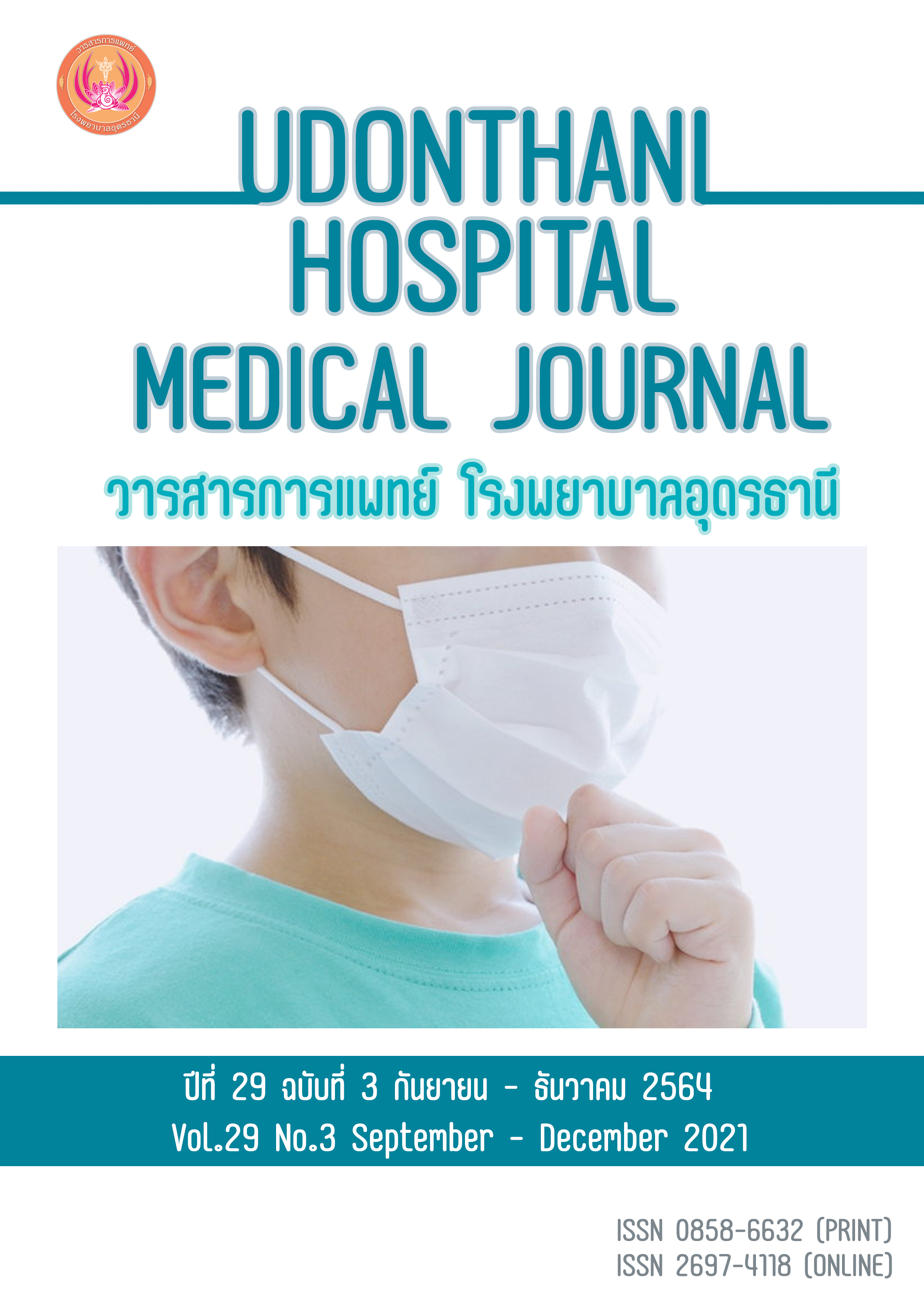การพัฒนาแบบทดสอบวินิจฉัยสามระดับเพื่อวินิจฉัยมโนทัศน์คลาดเคลื่อนทางการศึกษาพยาบาล
คำสำคัญ:
แบบทดสอบวินิจฉัยสามระดับ, มโนทัศน์คลาดเคลื่อนทางการศึกษาพยาบาล, การวินิจฉัยพุทธิปัญญาบทคัดย่อ
แบบทดสอบวินิจฉัยสามระดับมีความสำคัญโดยเป็นแบบทดสอบเฉพาะสำหรับใช้ในการวินิจฉัยพุทธิปัญญา แบบทดสอบวินิจฉัยสามระดับ ประกอบด้วย ระดับที่ 1 แสดงคำตอบ ระดับที่ 2 แสดงเหตุผลของคำตอบ และเพิ่มระดับที่ 3 แสดงความมั่นใจในคำตอบ การพัฒนาแบบทดสอบวินิจฉัยสามระดับเพื่อแก้ไขข้อจำกัดของแบบทดสอบวินิจฉัยสองระดับที่ไม่สามารถจำแนกการตอบผิดว่ามาจากมโนทัศน์คลาดเคลื่อนหรือจากการพร่องความรู้ ขั้นตอนการพัฒนาแบบทดสอบวินิจฉัยสามระดับประกอบด้วย 5 ขั้นตอน ดังนี้ ขั้นตอนที่ 1 การระบุเนื้อหาองค์ความรู้ ขั้นตอนที่ 2 การสำรวจมโนทัศน์และมโนทัศน์คลาดเคลื่อน ขั้นตอนที่ 3 การพัฒนาแบบทดสอบวินิจฉัยสามระดับ ขั้นตอนที่ 4 การทดลองใช้ และขั้นตอนที่ 5 การตรวจสอบคุณภาพตามทฤษฎีการทดสอบแบบดั้งเดิมและตรวจสอบคุณภาพตามทฤษฎีการตอบสนองข้อสอบแล้วปรับปรุงแบบทดสอบวินิจฉัยสามระดับ ในการออกแบบการให้ค่าคะแนน ถ้ากำหนดการให้คะแนนในแบบทดสอบวินิจฉัยสามระดับเป็นแบบสองค่าคะแนนในทุกระดับ จะทำให้ได้แบบแผนการตอบที่เป็นไปได้ 8 แบบแผน และจำแนกกลุ่มผู้เรียนได้เป็น 5 กลุ่ม ได้แก่ กลุ่มที่ 1 กลุ่มที่มีความรู้ แสดงแบบแผนการตอบ [1,1,1] กลุ่มที่ 2 กลุ่มที่มีมโนทัศน์คลาดเคลื่อน แสดงแบบแผนการตอบ [0,0,1], [1,0,1] และ [0,1,1] กลุ่มที่ 3 กลุ่มที่พร่องความรู้ แสดงแบบแผนการตอบ [0,0,0] กลุ่มที่ 4 กลุ่มไม่มั่นใจในการตอบ แสดงแบบแผนการตอบ [1,1,0] และกลุ่มที่ 5 กลุ่มที่ใช้การเดา แสดงแบบแผนการตอบ [1,0,0] และ [0,1,0] การนำแบบทดสอบวินิจฉัยสามระดับไปประยุกต์ใช้ทางการพยาบาล เพื่อวินิจฉัยมโนทัศน์และมโนทัศน์คลาดเคลื่อนทางการศึกษาพยาบาล ทำให้ได้สารสนเทศจากการวินิจฉัยพุทธิปัญญาอันนำไปสู่การค้นหาแนวทางในการปรับปรุงแก้ไขและพัฒนาผู้เรียนให้มีความก้าวหน้าในทางการเรียนต่อไป
เอกสารอ้างอิง
2. Anderson, L.W., Krathwohl, D.R., Airasian, P., Cruikshank, K., Mayer, R., Pintrich, P., Raths, J., Wittrock, M. A Taxonomy for Learning, Teaching, and Assessing: A Revision of Bloom's Taxonomy of Educational Objectives. New York: Addison Wesley Longman; 2001.
3. Arslan, Cigdemoglu, Moseley. A Three-Tier Diagnostic Test to Assess Pre-Service Teachers’ Misconceptions about Global Warming, Greenhouse Effect, Ozone Layer Depletion, and Acid Rain. International Journal of Science Education 2012; 34: 1667-1686.
4. Schoon, K.J. The Origin and Extent of Alternative Conceptions in the Earth and Space Sciences: A Survey of Pre-Service Elementary Teachers. Journal of Elementary Science Education 1995; 7: 27-46.
5. Kirbulut, Geban. Using Three-Tier Diagnostic Test to Assess Students’ Misconceptions of States of Matter. Eurasia Journal of Mathematics, Science & Technology Education 2014; 10: 509-521.
6. Briggs, Alonzo, Schwab, Wilson. Diagnostic assessment with ordered multiple-choice items. Educational Assessmen 2006; 11: 33-63.
7. Pesman, Eryilmaz. Development of a Three-Tier Test to Assess Misconceptions About Simple Electric Circuits. The Journal of Educational Research 2010; 103: 208–222.
8. Caleon, Subramanium. Do Students Know What They Know and What They Don’t Know? Using a Four-Tier Diagnostic Test to Assess the Nature of Students’ Alternative Conceptions. Res Sci Educ 2010; 40: 313-337.
9. Caleon, Subramanium. Development and Application of a Three-Tier Diagnostic Test to Assess Secondary Students’ Understanding of Waves. International Journal of Science Education 2010; 32: 939-961.
10. ศุภามณ จันทร์สกุล. การเปรียบเทียบผลการวินิจฉัยพุทธิปัญญาโดยใช้แผนที่ตัวแปรเชิงทฤษฎีและแบบทดสอบวินิจฉัยสามระดับในกระบวนการพยาบาลพื้นฐาน [วิทยานิพนธ์]. กรุงเทพฯ: จุฬาลงกรณ์มหาวิทยาลัย; 2561.
11. Wu, M., Adam, R. Applying the rasch model to psycho-social measurement: A practical approach. Melbourne: Educational measurement solutions; 2007.
12. Heesch, K.C., Masse, L.C., Dunn, A.L. Using rasch modeling to re-evaluate three scales related to physical activity: enjoyment, perceived benefits and perceived barriers. Health education research theory & practice 2006; 21(Suppl 1): 58-72.
13. Adam, R., Wu, M. Modelling a dichotomously scored multiple choice test with the rasch model [Internet]. 2010 Available from: https://www.acer.edu.au/files/
14. Holster, Lake. From raw scores to rasch in the classroom. Shiken 2015; 19: 32-41.
15. He, Q., Wheadon, C. The effect of sample size on item parameter estimation for the partial credit model. Centre for education research and policy. AQA 2012;1-16.
16. McClary, Bretz. Development and Assessment of A Diagnostic Tool to Identify Organic Chemistry Students’ Alternative Conceptions Related to Acid Strength. International Journal of Science Education 2012; 1-25.
17. Gurcay, Gulbus. Development of three-tier heat, temperature and internal energy diagnostic test. Research in Science & Technological Education 2015; 33: 197-217.
ดาวน์โหลด
เผยแพร่แล้ว
รูปแบบการอ้างอิง
ฉบับ
ประเภทบทความ
สัญญาอนุญาต
การละเมิดลิขสิทธิ์ถือเป็นความรับผิดชอบของผู้ส่งบทความโดยตรง
ผลงานที่ได้รับการตีพิมพ์ถือเป็นลิขสิทธิ์ของผู้นิพนธ์ ขอสงวนสิทธิ์มิให้นำเนื้อหา ทัศนะ หรือข้อคิดเห็นใด ๆ ของบทความในวารสารไปเผยแพร่ทางการค้าก่อนได้รับอนุญาตจากกองบรรณาธิการ อย่างเป็นลายลักษณ์อักษร



